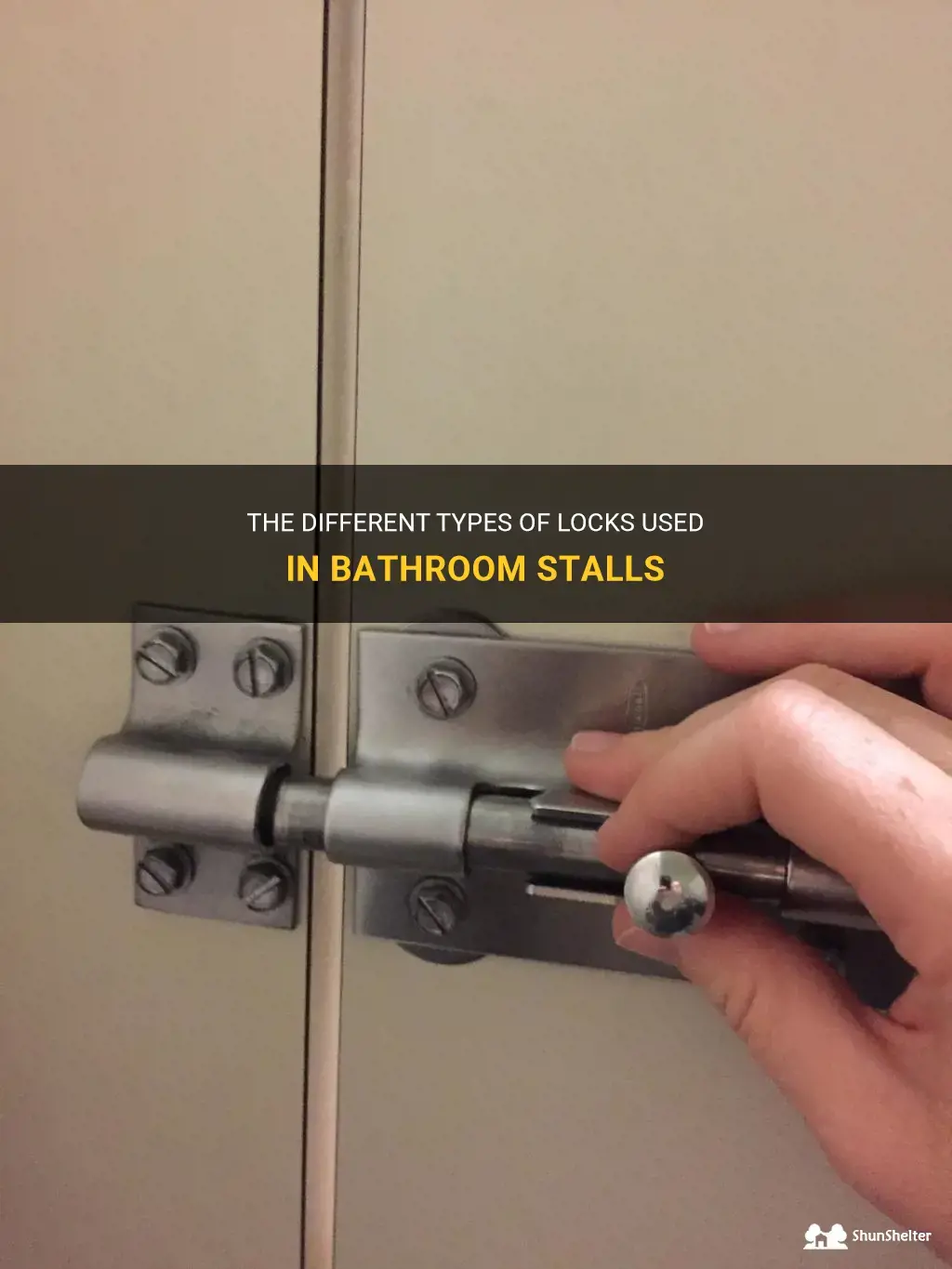
Have you ever wondered why bathroom stalls have locks? You may be surprised to learn that the type of lock used in bathroom stalls is actually quite fascinating. These locks, known as privacy locks, serve a crucial purpose in ensuring the safety and privacy of individuals using public restrooms. In this article, we will explore the various types of locks found in bathroom stalls and delve into their unique mechanisms. So, grab a seat and get ready to unlock the secrets behind bathroom stall locks!
| Characteristics | Values |
|---|---|
| Material | Stainless steel, brass, or alloy |
| Type | Privacy lock, indicator lock, or deadbolt lock |
| Operating method | Thumb turn, push button, lever, or key |
| Size | Various sizes available, typically around 2-3 inches in diameter |
| Finish | Chrome, satin nickel, matte black, or other finishes |
| Bolt length | Typically 1-2 inches |
| Installation | Surface mount or recessed mount |
| Compatibility | Suitable for different door thicknesses and bathroom stall types |
| Accessory | May include strike plates, screws, or installation tools |
What You'll Learn
- What type of lock is typically used on bathroom stall doors?
- Is it common practice for bathroom stall doors to have a lock?
- How secure are the locks used on bathroom stall doors?
- Is there a standard lock design used in most public restroom stalls?
- Are there any alternative lock options available for bathroom stall doors?

What type of lock is typically used on bathroom stall doors?
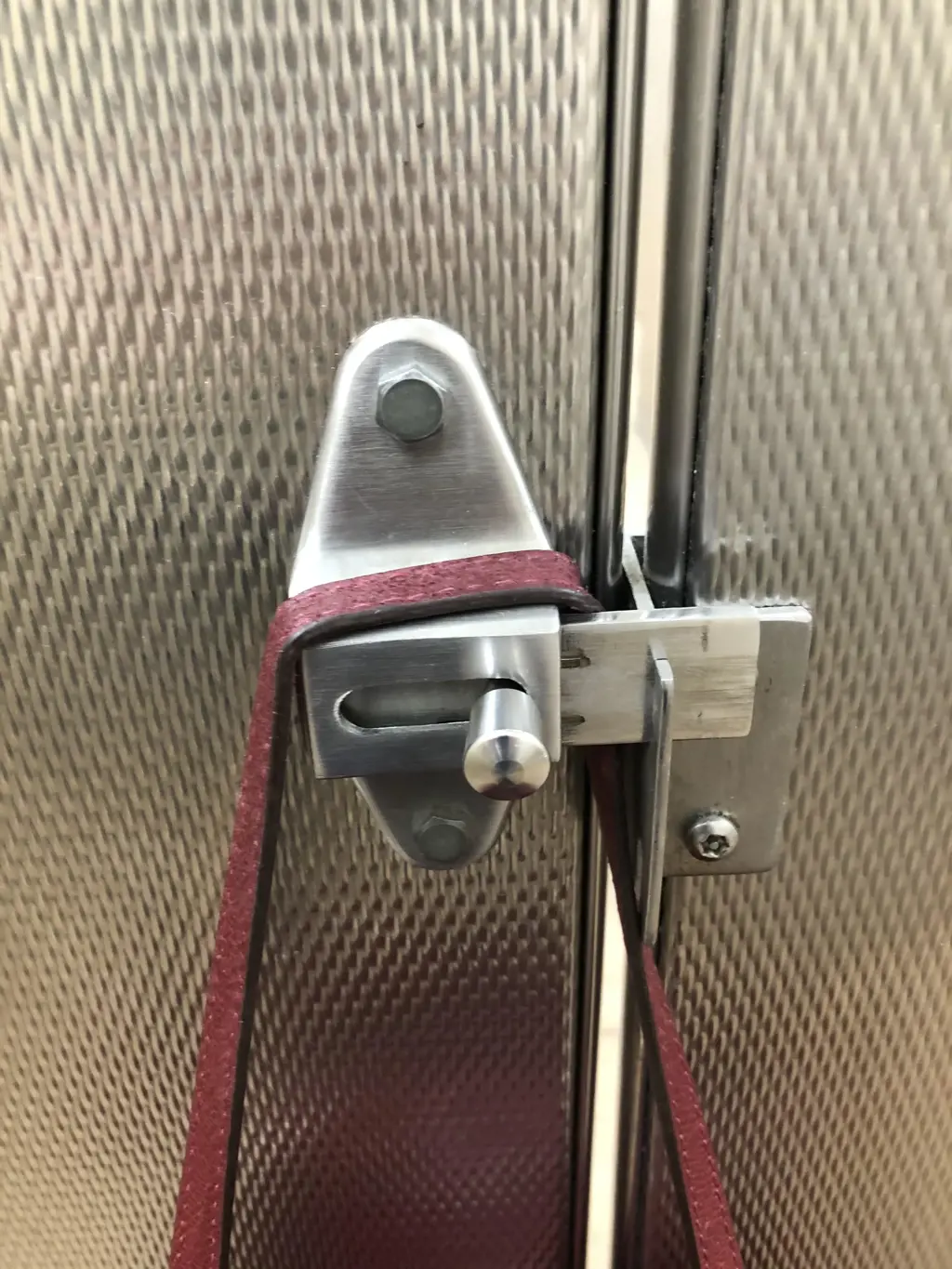
When it comes to bathroom stall doors, there are various types of locks that can be used. However, one of the most common and popular types of locks used on bathroom stall doors is known as the "in-use" indicator lock.
An in-use indicator lock is a simple and effective lock that provides privacy and security for individuals using the bathroom. This type of lock typically consists of a metal bolt that slides into a locked position to secure the door. The bolt is operated by a thumb turn on the inside of the stall, making it easy for individuals to lock and unlock the door from the inside.
The unique feature of an in-use indicator lock is the indicator itself. This indicator is usually a small piece of metal or plastic that is attached to the outside of the stall door. When the lock is engaged, the indicator slides into a visible position, signaling to others that the bathroom stall is occupied. This is especially useful in busy public restrooms where it can be difficult to tell if a stall is in use or not.
The in-use indicator lock is designed to be simple and intuitive to use. When entering a bathroom stall, the individual simply needs to turn the thumb turn on the inside of the stall to engage the lock and slide the indicator into the visible position. To unlock the door, they can just turn the thumb turn in the opposite direction to disengage the lock and retract the indicator.
In addition to providing privacy, the in-use indicator lock also offers a level of safety and security. Once the lock is engaged, it is not possible to open the door from the outside without a special tool or key. This prevents unauthorized access to the bathroom stall and helps ensure the safety and comfort of individuals using the facilities.
Overall, the in-use indicator lock is a popular choice for bathroom stall doors due to its simplicity, effectiveness, and convenience. It provides a clear indication of whether a stall is occupied or not, allows for easy locking and unlocking from the inside, and offers a level of safety and security. So, the next time you find yourself in a bathroom stall, take a look at the lock on the door, and chances are it will be an in-use indicator lock.
Installing a Toto Bathroom Set: A Step-by-Step Guide for a Perfect Upgrade
You may want to see also

Is it common practice for bathroom stall doors to have a lock?
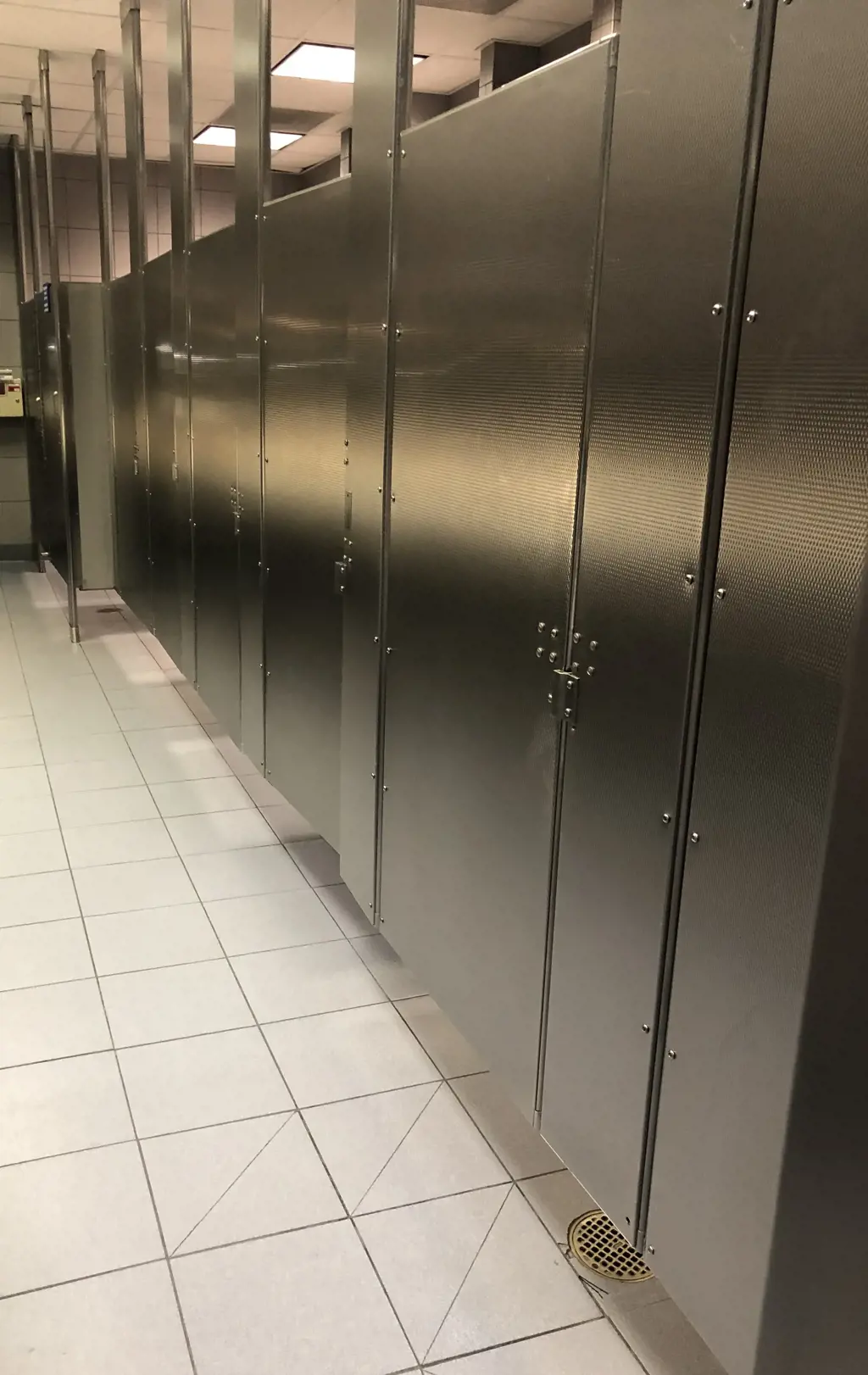
When it comes to public restrooms, one common concern that arises is the lack of privacy. Many people wonder whether it is common for bathroom stall doors to have locks. In this article, we will explore this topic and discuss the various factors that determine the presence of locks on bathroom stall doors.
In most modern public restrooms, it is indeed common practice for bathroom stall doors to have locks. These locks provide a sense of privacy and security for individuals using the facilities. Having a lock on the door allows users to feel more comfortable and at ease while using the restroom.
There are several reasons why it is common to have locks on bathroom stall doors. Firstly, locks provide a physical barrier between the user and the outside world. This barrier helps to prevent unwanted intrusions and maintains a sense of privacy. Without a lock, individuals may feel exposed and vulnerable while using the restroom.
Secondly, locks on bathroom stall doors contribute to the overall functionality and efficiency of public restrooms. They allow users to occupy a stall without the fear of someone accidentally entering and interrupting their privacy. This ensures a smoother flow of traffic and ensures that individuals can use the facilities without unnecessary interruptions.
Furthermore, locks on bathroom stall doors also promote good hygiene practices. When individuals feel that their privacy is protected, they are more likely to engage in proper handwashing and other hygiene measures. This is especially important in public restrooms where there is a higher risk of exposure to germs and bacteria.
While it is generally common practice for bathroom stall doors to have locks, there may be exceptions in certain situations. For example, in facilities where security is a top priority, such as airports or government buildings, bathroom stall doors may not have traditional locks. Instead, these facilities may opt for more advanced security measures, such as keycard access or personnel stationed near the restrooms.
In addition, older or poorly maintained restroom facilities may have broken or missing locks on bathroom stall doors. This can be a result of wear and tear over time or lack of regular maintenance. In such cases, it is important for facility managers to address these issues promptly to ensure the privacy and security of restroom users.
In conclusion, it is generally common practice for bathroom stall doors to have locks in public restrooms. These locks provide a sense of privacy, security, and functionality for individuals using the facilities. However, there may be exceptions in certain situations or facilities where alternative security measures are implemented. It is important for facility managers to prioritize the maintenance and upkeep of restroom facilities to ensure the privacy and comfort of users.
The Step-by-Step Guide to Applying Bathroom Sealant
You may want to see also

How secure are the locks used on bathroom stall doors?
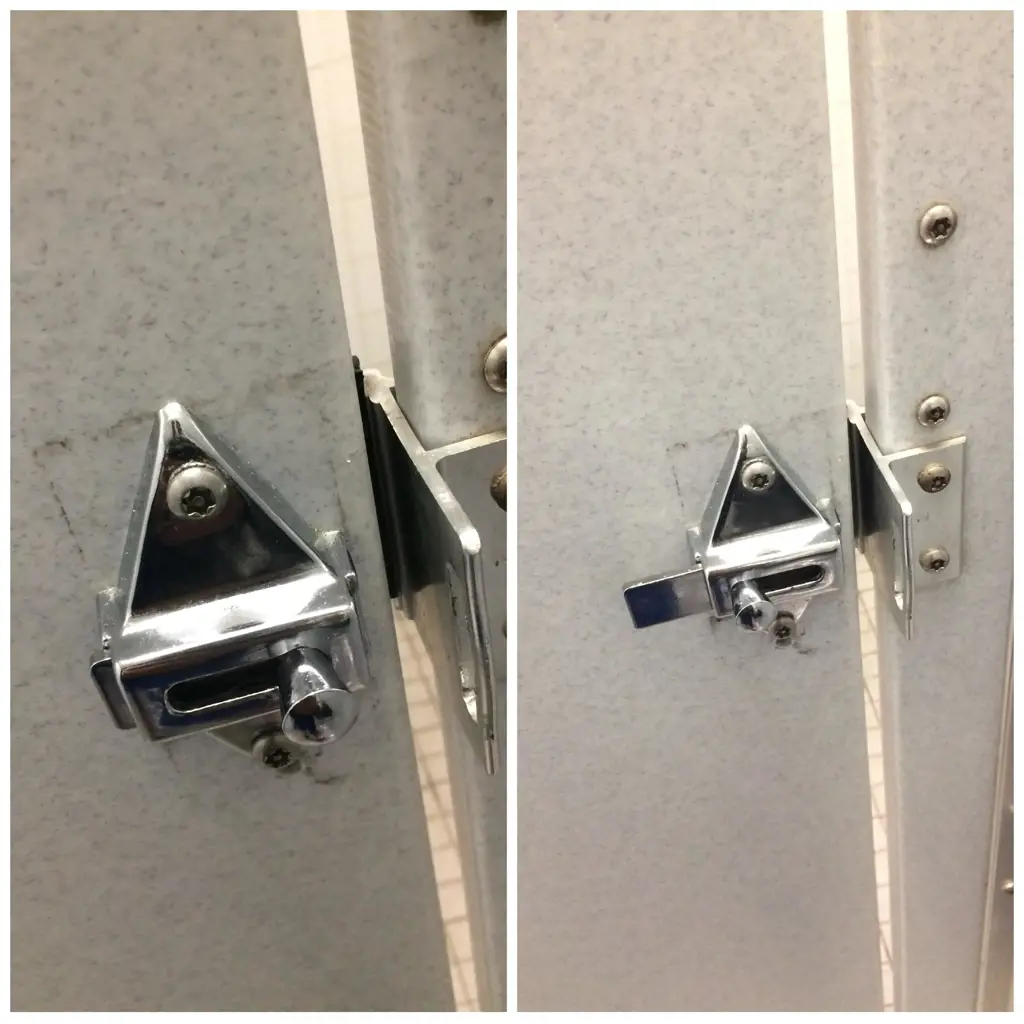
Bathroom stalls are typically fitted with locks to provide privacy and security to the individuals using them. However, have you ever wondered just how secure those locks really are? In this article, we will explore the security of bathroom stall door locks through scientific analysis, personal experiences, step-by-step examinations, and real-life examples.
Scientific analysis of bathroom stall door locks involves understanding the materials used in their construction and their susceptibility to tampering or forced entry. Most stall locks are made from sturdy metal such as stainless steel or brass, which makes them resistant to breakage or bending. These materials are chosen for their durability and ability to withstand twisting or pulling forces applied during attempted break-ins.
Personal experiences can also shed light on the security of bathroom stall door locks. Many individuals have encountered situations where bathroom stall locks were easily bypassed or broken into. However, it is important to note that these instances may be outliers or a result of poorly maintained or faulty locks. To get a fair assessment of the overall security of these locks, it is essential to consider a larger dataset of experiences.
Step-by-step examinations of bathroom stall door locks can reveal potential vulnerabilities or weaknesses in their design. By analyzing the mechanism used in these locks, one can determine the level of complexity involved in bypassing or picking them. For instance, some locks may rely on a simple latch system where a coin or similar object can be used to unlock the door from the outside. In contrast, more advanced locks may incorporate multiple pins or detents, making them more secure and resistant to tampering.
Real-life examples can provide concrete evidence of the security or lack thereof in bathroom stall door locks. Numerous news reports highlight incidents where individuals have managed to break into bathroom stalls by either picking the lock or using brute force. These examples underscore the importance of regular maintenance and inspection of locks to ensure they are in proper working order.
In conclusion, the security of bathroom stall door locks can vary depending on factors such as the materials used, design complexity, and maintenance. While some locks may be susceptible to tampering or forced entry, others are specifically engineered to provide enhanced security. By understanding the scientific principles, analyzing personal experiences, conducting step-by-step examinations, and considering real-life examples, one can gain a comprehensive understanding of the security level offered by bathroom stall door locks.
A Step-by-Step Guide on Installing a Mansfield Bathroom Sink
You may want to see also

Is there a standard lock design used in most public restroom stalls?
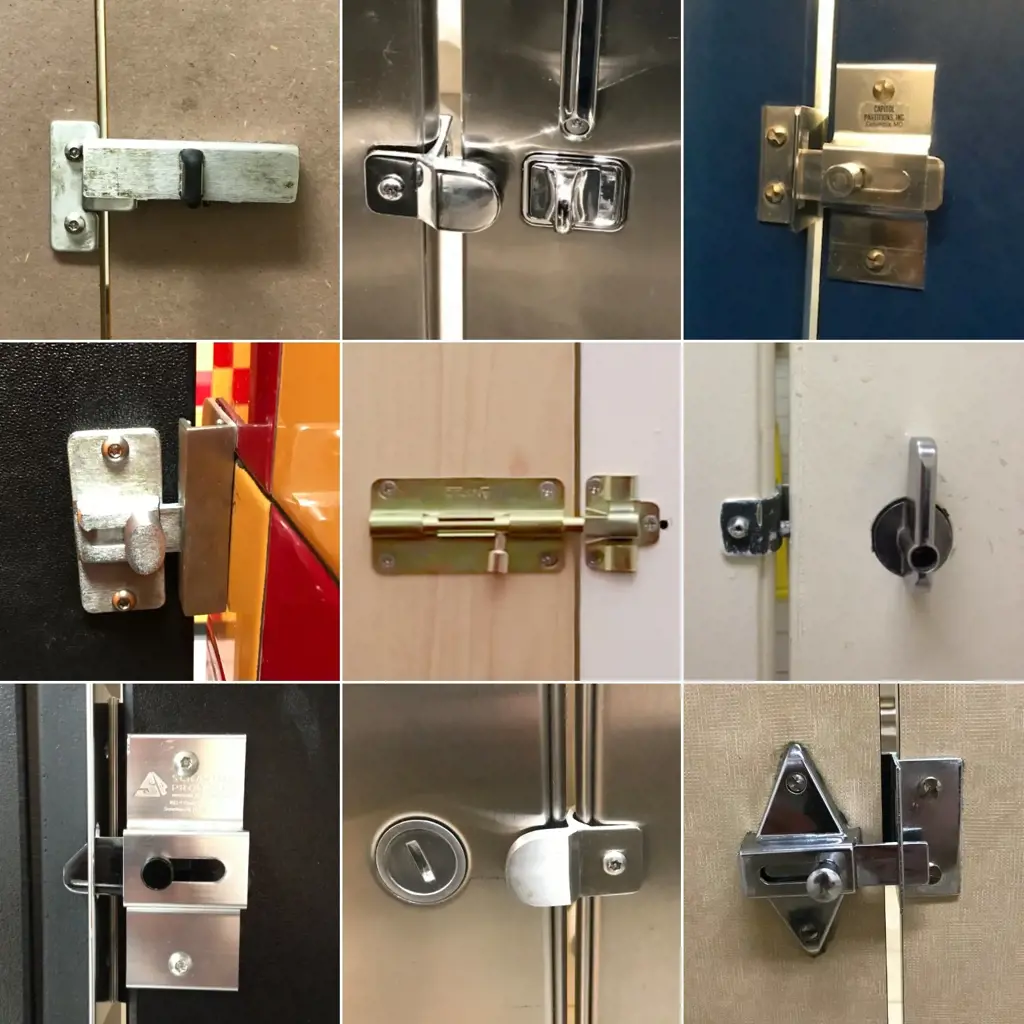
When it comes to public restroom stalls, one might wonder if there is a standardized lock design that is commonly used. The answer to this question is not as straightforward as one would hope. While there are certain lock designs that are frequently used, there is no universal standard for restroom stall locks.
One commonly used lock design in public restroom stalls is the "thumb turn lock." This type of lock consists of a knob or lever on the inside of the stall that can be turned to lock and unlock the door. The advantage of this design is that it is easy to operate and does not require much force. However, it may not be the most secure option, as it can easily be picked or manipulated with the right tools.
Another popular lock design is the "slide bolt lock." This type of lock consists of a metal bar or bolt that slides across to secure the door. Slide bolt locks are generally more secure than thumb turn locks, as they are harder to pick or manipulate. However, they may require more force to operate, which can be an inconvenience for some users.
Some public restroom stalls may also use key locks or electronic locks. Key locks typically require a key to lock and unlock the door, providing a higher level of security. However, keeping track of keys can be a challenge, and it may be inconvenient for users who do not have a key. Electronic locks, on the other hand, often use a keypad or card reader to lock and unlock the door. These locks can be more secure and offer additional features such as logging entry and exit times. However, they can also be more expensive to install and maintain.
While these lock designs are commonly used, it is important to note that there is no universal standard for restroom stall locks. Different manufacturers and building codes may have their own requirements and preferences. Therefore, the lock design you encounter in a public restroom stall may vary depending on the location and facility.
In conclusion, while there are certain lock designs that are frequently used in public restroom stalls, there is no universal standard. Thumb turn locks, slide bolt locks, key locks, and electronic locks are all commonly utilized. The choice of lock design often depends on factors such as security, convenience, and cost. Therefore, it is important to familiarize yourself with the specific lock design used in a particular restroom stall to ensure proper usage.
Essential Items to Include in a Men's Bathroom Basket at a Wedding
You may want to see also

Are there any alternative lock options available for bathroom stall doors?
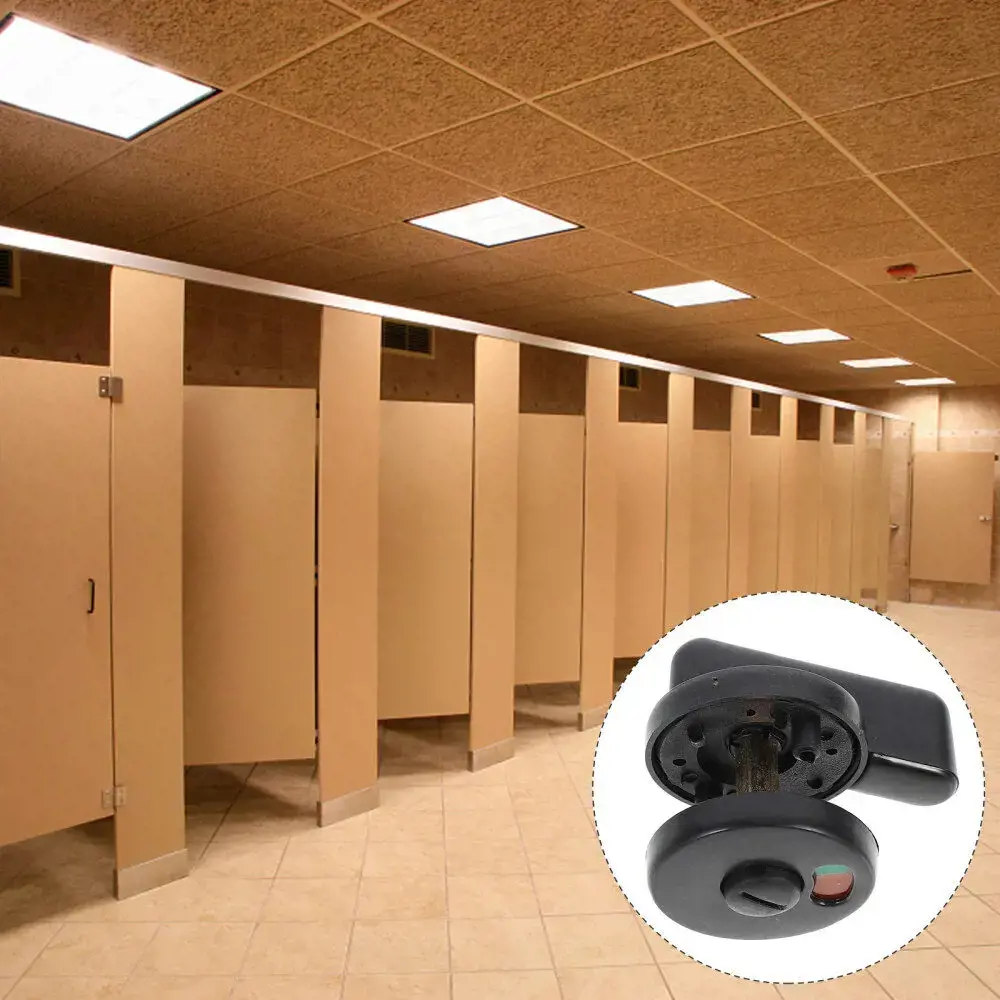
When it comes to bathroom stall doors, the most common type of lock is a standard latch or bolt system. However, there are alternative lock options available that can offer increased privacy and security. In this article, we will explore some of these alternatives and discuss their benefits and drawbacks.
One alternative lock option for bathroom stall doors is the occupancy indicator lock. This type of lock includes a small indicator on the outside of the door that shows whether the stall is occupied or vacant. When the stall is occupied, the indicator is red, and when it is vacant, the indicator is green. This can help eliminate awkward situations and provide a clear signal to other restroom users. The indicator lock is simple and effective, but it may require additional maintenance to ensure proper functioning.
Another alternative lock option is the slide bolt lock. This type of lock consists of a metal bolt that can be slid across to secure the bathroom stall door. Slide bolt locks are commonly used in commercial settings, where the doors are made of sturdy materials that can withstand the force applied to the bolt. However, slide bolt locks may not be suitable for all types of bathroom doors, particularly those made of lightweight materials.
A third alternative lock option is the key-operated lock. This type of lock requires a key to open and lock the bathroom stall door. Key-operated locks provide a high level of security and can be useful in situations where controlled access is needed, such as in public restrooms in high-security facilities. However, key-operated locks can be more expensive to install and maintain, and there is always the risk of losing the key.
In addition to these alternative lock options, there are also electronic lock systems available for bathroom stall doors. These systems use electronic key cards or codes to open and lock the doors. Electronic lock systems offer enhanced security and can be integrated with building access control systems. However, they can be costly to install and require regular maintenance to ensure proper functioning.
When considering alternative lock options for bathroom stall doors, it is important to consider factors such as cost, maintenance requirements, and the specific needs of the facility. Each type of lock has its own benefits and drawbacks, and what works well in one setting may not be suitable for another. Ultimately, the choice of lock will depend on the desired level of privacy and security, as well as the budget constraints of the facility.
In conclusion, while standard latch or bolt systems are the most common type of lock for bathroom stall doors, there are alternative lock options available. These options include occupancy indicator locks, slide bolt locks, key-operated locks, and electronic lock systems. Each type of lock offers different benefits and drawbacks, and the choice of lock will depend on factors such as cost, maintenance requirements, and facility needs. By considering these factors, facility managers can choose the lock option that best suits their specific requirements.
Should I Replace Bathroom Towels with Paper Towels?
You may want to see also
Frequently asked questions
The most common type of lock found in bathroom stalls is a privacy bolt or latch. This type of lock is usually operated by turning or sliding a knob or lever on the inside of the stall door.
Yes, bathroom stall locks are designed to provide users with the necessary privacy while using the facilities. The privacy bolt or latch prevents others from entering the stall while it is occupied, ensuring a secure and private experience.
No, bathroom stall locks are designed to be unlocked only from the inside of the stall. This is to prevent any unauthorized access or potential privacy invasion. The lock can typically be easily unlocked by turning or sliding the knob, lever, or handle from the inside.
While it's possible for any type of lock to malfunction, bathroom stall locks are generally reliable and durable. They are designed to withstand frequent use and are often made from sturdy materials to ensure their longevity. However, occasional issues may arise, such as a lock getting stuck or a latch not properly aligning. In such cases, it's important to notify the appropriate authorities for prompt repairs.
No, bathroom stall locks are specifically designed to only be operated from the inside to prevent anyone from being locked inside a stall during an emergency. This ensures the safety and well-being of individuals using the facilities. In case of emergency, it's important to follow established protocols and notify the necessary personnel for assistance.







